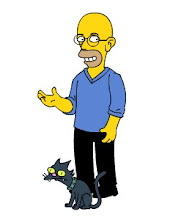
Short stories are definitely a strong point for science fiction. They allow the author to explore an interesting idea without the expectation of character development. Several of the stories here go one step further in a way by allowing the author to dispense even further with characterisation since several of the characters are known to readers already (though this does create potentially interesting trade-offs between new and familiar readers). Anyway, the stories here represent excellent examples of the short story form while additionally being satisfying for readers already familiar with Reynolds' Revelation Space.
The first two stories deal with the character Nevil Clavain and his "defection" to the Conjoiner faction of humanity. The stories slot nicely into gaps in Reynolds' novels and flesh out relationships between various characters. They're also good stories in their own right, particularly the second one which approximates a good whodunnit on an alien world. The final story in the collection, Galactic North, initially takes place during the Revelation Space novels but, through time dilation, takes in a much broader sweep of history. It reveals the long term outcome of the conflict between humanity, the Inhibitors and the human-made Greenfly. Possibly a mistake on Reynolds' part to lay out in some detail what might have made for a good novel down the line. Still, he's certainly left himself wriggle room, and I'm sure he's smart enough to milk his future history some more.
Other stories in the collection take the form of a love story set in Revelation Space, Weather; a spy story dealing with modified humans used as slaves in the oceans of Europa, A Spy In Europa; the undoing of a collector of rare and exotic animals, Grafenwalder's Bestiary; and an adventure aboard a ghost ship with a conscience, Nightingale.
For readers unfamiliar with Revelation Space, the stories will likely be particularly exciting since they draw, teasingly, on a rich and carefully thought-through history and geography. However, there's a lot here for readers, such as myself, who are more familiar with this universe. Being short, and not forced to create a grand narrative, they also avoid some of the problems of fatigue that Reynolds' novels suffer to a degree from (Pushing Ice being a notable exception). Avoiding detailed characterisation also works to Reynolds' advantage here (much as it has done for other science fiction authors like Arthur C. Clarke and Isaac Asimov).
Anyway, I'll certainly be keeping an eye out for further volumes like this one by Reynolds.






.png)




